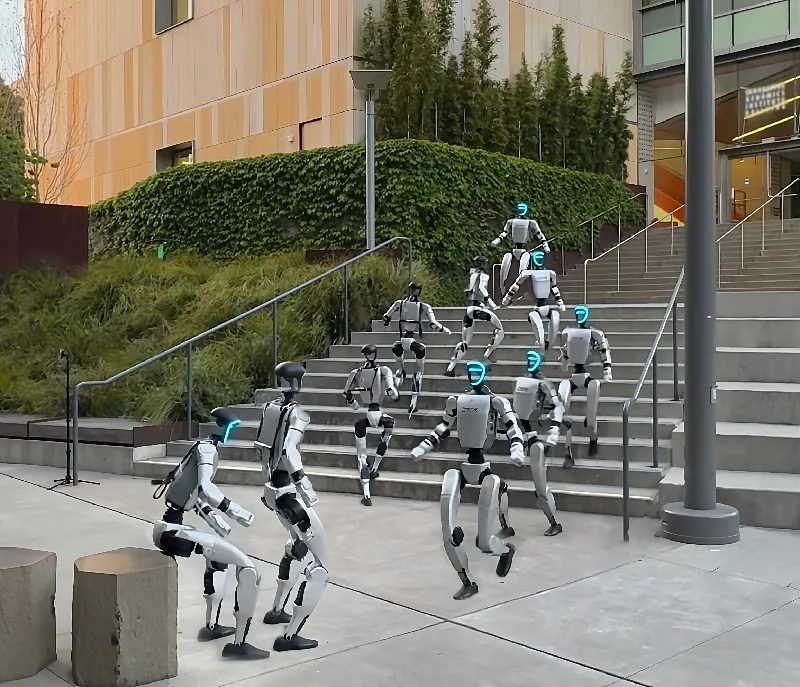From Video to Action: How VIDEOMIMIC is Teaching Humanoid Robots to Navigate Real-World Challenges

Researchers at UC Berkeley have developed a groundbreaking method that enables humanoid robots to learn complex skills by watching everyday human activities on video. This innovative pipeline, named VIDEOMIMIC, transforms casual videos, such as those captured on smartphones, into actionable robotic control policies, allowing robots to perform various tasks like climbing stairs and sitting down, all using contextual understanding of their environment.
The Learning Process: Observing and Acting
The core idea behind VIDEOMIMIC is remarkably intuitive: humanoid robots can learn to interact with their surroundings by observing how humans do it. Much like how we learn skills through imitation, VIDEOMIMIC allows robots to glean essential information about human motion and the related environmental context directly from videos. By converting these observations into a learning framework, these robots can develop a wide array of functional behaviors without the extensive training typically required.
A Step-by-Step Breakdown of VIDEOMIMIC
The process begins with the analysis of monocular videos, which means videos captured from a single viewpoint. VIDEOMIMIC not only identifies human movement but also reconstructs the environment around them. This includes mapping out 3D geometry and understanding how the human interacts within that space.
After reconstructing the scene and human motion, the system uses reinforcement learning to train a reinforcement learning (RL) policy. This policy is then distilled into a simplified version that allows the robot to operate using proprioceptive feedback and a local height map of its surroundings. Essentially, the robot learns a unified motion policy that is responsive to both its internal state and the environmental context, enabling it to execute complex actions like stepping over obstacles or transitioning from sitting to standing.
Real-World Applications and Performance
The results from deploying this system on real humanoid robots have been promising. With the ability to adapt to diverse and previously unseen environments, these robots can successfully climb stairs, navigate uneven terrain, and maneuver around obstacles—all without pre-programmed instructions. The research showcased the remarkable robustness of the robots' learned skills, emphasizing repeatable contextual control.
One significant outcome of this research is the scalability of the training processes involved. By harnessing publicly available videos, videos recorded during normal activities, and combining these with advanced robotic capabilities, VIDEOMIMIC signifies a major leap forward in the realm of human-robot interaction, potentially paving the way for more integrated robots in everyday settings like homes or workplaces.
The Road Ahead: Challenges and Future Directions
Although the results are promising, the development team acknowledges that challenges remain. Issues such as the robots’ reliance on video quality, the fidelity of the reconstructed environments, and the need for larger and more diverse datasets are all areas identified for future improvement. Further advancements in 3D sensing and more sophisticated algorithms could enhance the robots' ability to understand and interact with more complex real-world scenarios.
Ultimately, VIDEOMIMIC offers a glimpse into a future where robots can learn and master essential life skills by observing the world around them, ushering in a new era of robotics that melds functionality with adaptability.